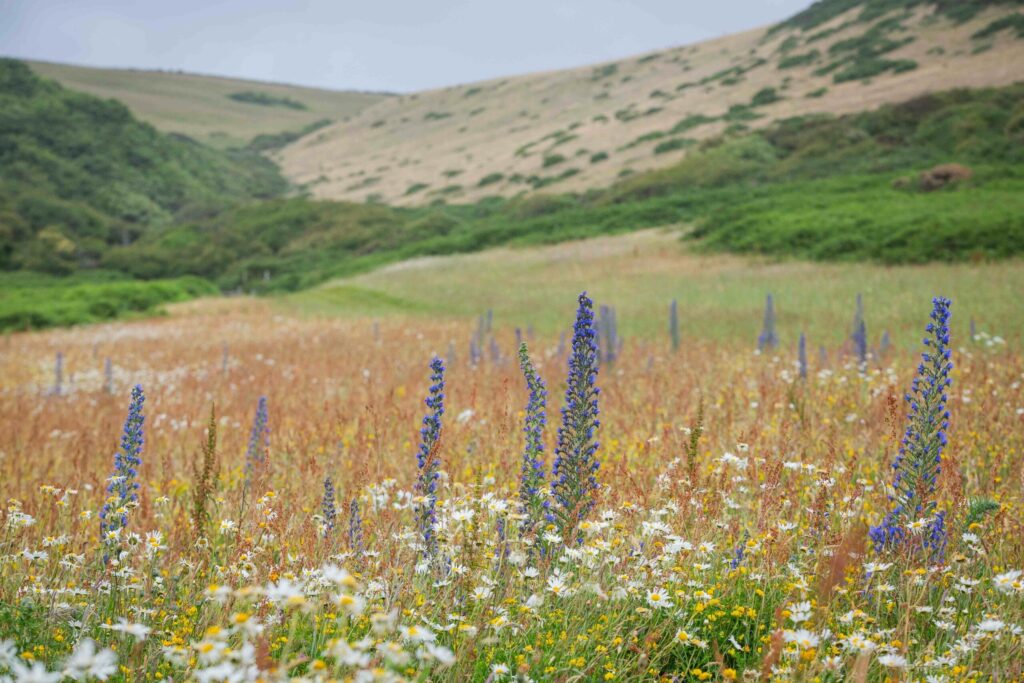On England’s North Devon coast, 90 hectares of rare wildflower meadows have burst into bloom this summer. The fields are filled with swathes of white oxeye daisies, bird’s-foot trefoil, and the striking blue viper’s bugloss, along with plenty of meadow grasses. These wildflower meadows, the size of 197 football pitches, have taken two years to establish from 1.3 tons of seeds, marking the largest wildflower grassland project ever undertaken by the National Trust.
Throughout the summer, rangers and volunteers have been collecting seeds from these wildflower seed donor sites by hand or using a brush harvester or seed vacuum. The organizers estimate that every harvested hectare of donor site will generate enough seed to sow two more hectares of meadows. This efficient approach allows for the rapid expansion of grassland creation across the South West.
Species-rich grasslands are a rarity in the UK, with only 1% of flower-filled meadows still remaining. Joshua Day, the project coordinator, explains that establishing these grasslands can take a long time. Some wildflower species can take up to seven years to grow, while others, like the Oxeye Daisy, can become dominant quicker. After two winters of anticipation, the project team was thrilled to see the first successful seedlings emerge.
Early monitoring has shown significant progress, with wildflower coverage increasing from just 2% to 40% over two years. Joshua Day also noted that ‘fundamental’ meadow species like yarrow, red clover, common sorrel, and yellow rattle have already been recorded in the fields.
The inaugural full bloom indicates a promising future for species-rich grasslands in Devon, and the return of a diverse range of wildflowers to the countryside. This resurgence will benefit not only nature but also human wellbeing. The blooming wildflowers are also enhancing the local ecosystem, boosting wildlife populations and attracting new species. Sightings of pollinators such as the brown banded carder bee and meadow brown and common blue butterflies have increased as the plants they rely on continue to bloom and grow.
Insect populations are also flourishing, with hundreds of meadow grasshoppers spotted in the fields this summer. These insects serve as a vital food source for various wildlife species. Birds such as swifts, house martins, skylarks, kestrels, and meadow pipits, which are all declining in the UK, have been spotted in the area. Greater horseshoe bats have also been observed hunting across the meadows at dusk, indicating a healthier, more vibrant ecosystem.
By the end of 2024, the project aims to create 187 hectares of wildflower grasslands. With an increase in wildflower coverage from just 2% to 40% over two years, the project’s success is evident. The North Devon Grassland project also hopes to reintroduce 70 miles of meadows to the coastal landscape by 2030, contributing significantly to the conservation and rejuvenation of the UK’s rare and beautiful wildflower meadows.





